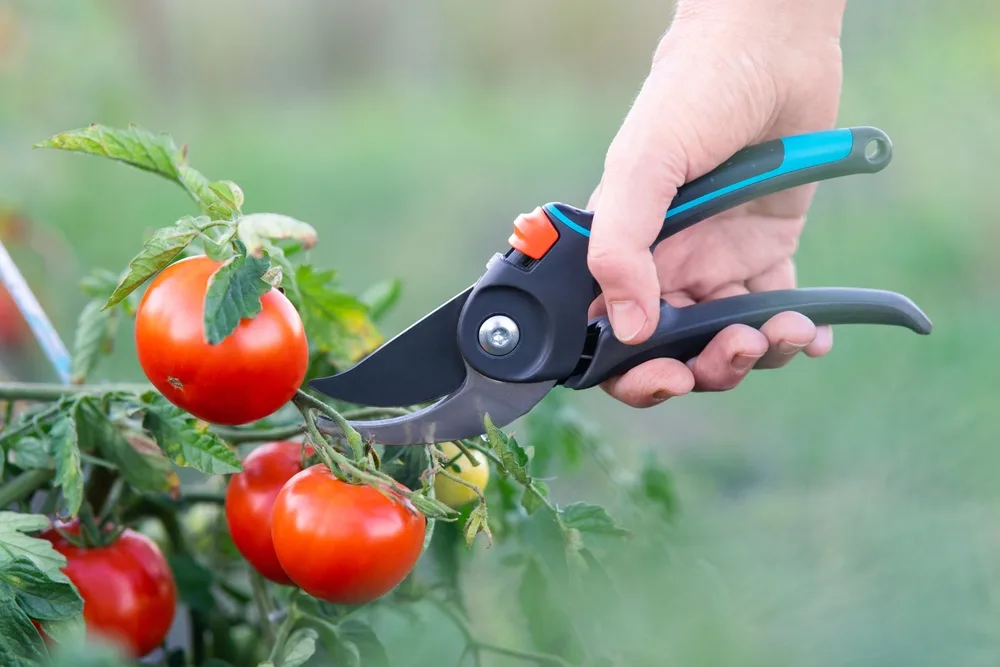Midsummer can be a mix of highs and lows in your garden. Here are some tips to focus on the highs.

1. Deadhead Perennial Flowers
Remove the old blooms from your spring perennials like peonies, bearded iris, and Asiatic lilies if you haven’t yet. This keeps plants looking tidy and prevents them from wasting energy on seed production. Instead, they’ll focus energy on their roots for better blooms next year.
Pro Tip:
Some perennials like salvia may bloom again if you cut off the faded flowers now. Trim them back by about one-third.
2. Daily Harvesting
As summer heats up, your veggies and fruits grow fast. Check your garden every day and pick vegetables like cucumbers, green beans, zucchini, and eggplants when they are young for the best taste. Daily harvesting also applies to strawberries, raspberries, and blueberries at their peak flavor.
Pro Tip:
Protect your berries and other prized produce from birds and rodents with netting. In subtropical areas like Central and South Florida, it’s a good time to start vegetable seeds indoors for transplanting in fall.
3. Pot Up Succulents and Cacti
Succulents and cacti thrive in hot, dry weather. These easy-care plants are perfect for when you’re on vacation because they don’t mind being left alone. They come in various shapes, sizes, and colors, perfect for creating a unique mini landscape in pots.
Pro Tip:
Ensure your pots have good drainage since cacti and succulents dislike wet soil.
4. Create a Personal Oasis with Container Plants
Transform a part of your yard into a cozy retreat. Place a comfy chair, surround it with container plants like palms, add a small fountain, and relax. In the fall, move your palms indoors to enjoy them all winter. Some easy palms to grow include Majesty, Chinese Fan, Cat, Areca, Lady, Kentia, Christmas, and Fishtail.
Pro Tip:
Move your palms indoors before frost is predicted to let them adjust to indoor conditions gradually.
5. Mulch, Mulch, and Mulch Some More
Mulch is key to a low-maintenance and healthy garden. Add several inches of mulch to increase soil moisture, reduce weeds, and improve your fruits and vegetables. Mulches can be quick-decaying (straw, newspaper, leaves) or long-lasting (bark chunks, cocoa bean hulls, shredded bark). Use quick-decaying mulches in vegetable and flower beds and long-lasting ones in permanent landscapes.
Pro Tip:
Buying mulch by the bag can get expensive. Look for bulk sources that deliver to your home.
6. Refresh Container Plants
By midsummer, cool-weather flowers like pansies and snapdragons stop blooming. Replace them with heat-loving plants like lantana, pentas, and zinnia. If removing plants from a mixed container, add fresh soil, new plants, and water well.
Pro Tip:
Heat-loving annuals like petunias and calibrachoa benefit from a midsummer trim to encourage new growth.
7. Reduce Biting Insects
Keep mosquitoes and flies away by using a ceiling fan, which is more effective than bug spray. Attract bug-eating songbirds to your garden with a birdbath. Birds will enjoy the water and help control insect populations.
Pro Tip:
Plant flowers like coneflower, black-eyed Susan, coreopsis, and liatris to attract birds.
8. Brighten the Shade
Use shade-loving perennials and annuals with colorful foliage to liven up shady areas. Hostas are great for pots and come in many colors and shapes. Other good options include caladium, coleus, and heuchera.
Pro Tip:
If plants won’t grow under trees with shallow roots, like Norway maples, use container plants instead.
9. Take a Garden Tour
Summer is perfect for exploring other gardens for inspiration. Visit local garden tours, public gardens, and parks to gather ideas. If traveling, research nearby public gardens to visit. Bring a camera to document interesting ideas, plant combinations, and techniques.
Pro Tip:
Check the Garden Conservancy’s Open Days program for tours of private gardens in your area.
10. Solarize Soil
In warm climates like Florida, solarize your soil now to kill weeds, diseases, and pests before fall planting. Cover beds with clear plastic for six weeks, ensuring the soil is slightly moist. The sun’s heat will sterilize the soil.
Pro Tip:
Clear plastic works better than black plastic as it lets heat penetrate the soil.
